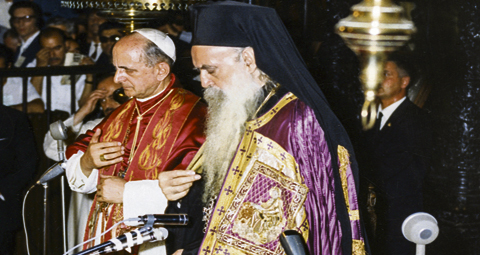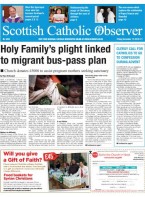May 16 | ![]() 0 COMMENTS
0 COMMENTS ![]() print
print

Political and religious divisions
Pope Francis is due to arrive in the Holy Land on May 24 for a packed three-day visit to mark the 50th anniversary of the meeting in Jerusalem between Pope Paul VI and Patriarch Athenagoras. It is understandable, therefore, in many ways that tensions are high in the region. This is an area of the world where religious and political tension overlaps and often, in fact, run in parallel.
No matter who travels with Pope Francis on his pilgrimage (so far Muslim, Jewish and Christian leaders, including Maronite Patriarch Beshara al-Rai’s planned trip to Jerusalem) or whom he meets on the way—from the King and Queen of Jordan to the President of the Palestine State to the Ecumenical Patriarch of Constantinople—the world will be watching. Latin Patriarch of Jerusalem, Fouad Twal, the top Roman Catholic cleric in the Holy Land, has urged Israel to crack down on vandals who recently put up anti-Christian and anti-Muslim graffiti ahead of the Papal visit. While Pope Benedict XVI’s eight-day visit to the Holy Land in 2009 was a Biblical pilgrimage with an inter-faith message and, later, support for a two-state solution, it was also seen as a visit by a beloved elder statesman. Pope Francis’ visit, however, near the beginning of his Papacy and at the height of his ‘powers’ and ‘popularity,’ is seemed as something apparently much more ‘threatening’ to those who control the region.
A shining example of different faiths working together here is Scotland is almost upon us. On Saturday May 31 this year’s Caritas Award will be presented to senior secondary school pupils who completed the unique programme—established after the 2010 Papal visit—in Catholic secondary schools and parishes. A number of awards winners, this year, as in previous years will be pupils studying at Catholic schools in Scotland from other denominations and faiths. The awards would not be possible without the hard work of the education community and parishes supporting the efforts of the students. It is encouraging to see the work of teachers recognised at events, such as the recent Catholic secondary headteacher’s conference and at the workshop preparing educators traveling to the developing world with SCIAF and Mission Matters Scotland.
One of the best ways to break down prejudice and ease tension is through education, and the ethos of Catholic schools in Scotland is a shining example of that.










